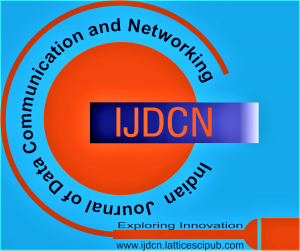![]()
Various Techniques for Wireless Power Transfer
Parul Arora
Parul Arora, Jagdishprasad Jhabarmal Tibrewala University Churu Rd, Vidyanagari, Churela, Rajasthan.
Manuscript Revised on 05 November 2020 | Revised Manuscript received on 19 November 2020 | Manuscript Accepted on 15 December 2020 | Manuscript published on 30 December 2020 | PP: 1-8 | Volume-1 Issue-1, December 2020 | Retrieval Number: 100.1/ijdcn.A1001121120
Open Access | Ethics and Policies | Indexing and Abstracting
© The Authors. Published by Lattice Science Publication (LSP). This is an open access article under the CC-BY-NC-ND license (http://creativecommons.org/licenses/by-nc-nd/4.0/)
Abstract: Electric &magnetic fields (EMF) are made by empowerd elements in issue, for example, electrons. A fixed empower makes an electrostatic-field in the area around it. A consistent current of empowers (direct current, DC) makes a static engaging field in the area around it. The above mentioned fields contain energy, at any rate can’t pass on power since they are set static. Anyway time-moving fields can pass on power. Enlivening electric-empowers, for example, are found in an alternating current (AC) in a wire of electrons; make time-differentiating EMF in the areanearby them. This fields may apply impacting powers on the moving electrons in an enduring “radio wire”, making them push ahead and in reverse. These speak to AC can be utilized to empower a heap. The affecting EMF remembering moving electric-empowers for a radio wire gadget can be disengaged into two regions, subordinate upon segment stretch out from the accepting wire. The limit between the areas is to some degree tragically portrayed. The fields having diverse features in these areas, and various technologies are designed for transferring power.
Keywords: Electric & Magnetic fields (EMF), (direct current, DC), (AC), making them push ahead and in reverse.
